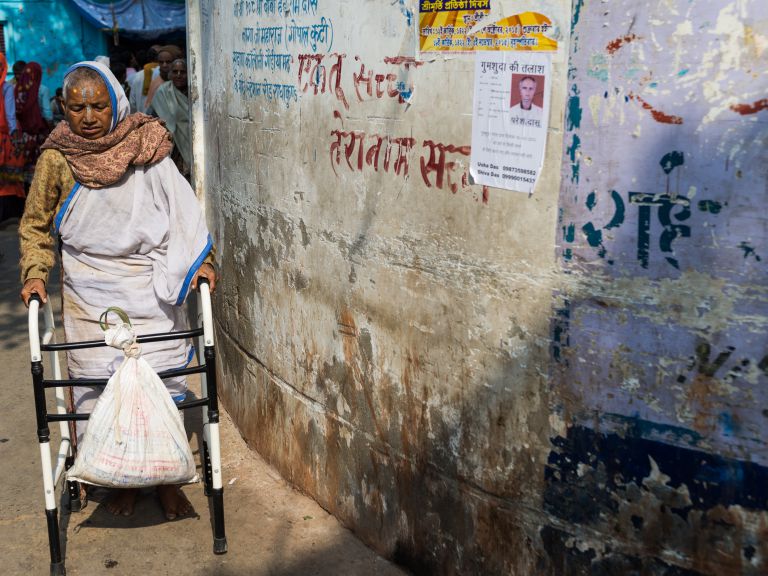Project Detail: Mothers - Widows of Vrindavan
Contest:
LuganoPhotoDays 2016
Brand:
LuganoPhotoDays
Author:
Sascha Richter Le
Project Info
Mothers - Widows of Vrindavan
According to the census of 1991 there are 33 Million widows in India.
In the classical, brahmanicial view they are physically alive but socially dead. They are expected to die before their husband or along with him or else they remain in the in-laws house, often debarred from chances to remarry.
The death of her husband marks her transition from a wife to a widow and the loss of her social and religious identity.
Their status puts them at the fringe of society. Most of them experience deprivations and discriminations on a daily basis, not seldomly suffering from severe depressions because of isolation and the absence of emotional and social support.
Widows are socially stigmatized in being expected to wear white clothes, which is the color symbolizing death and their asexuality. They further must resign all forms of make up and symbols of marriagehood, like bangles, ornamental chains, flowers, and the sindhoor (vermillion mark on their forehead).
As a form of symbolic castration they have to shave their hair and remove all symbols of feminity, thereby becoming subjugated to the society and men especially.
Traditional superstitions make them being regarded as inauspicious. Some people even think, that walking in their shadows brings bad luck. That is why widows are banned from some religious ceremonies and weddings (sometimes even of their own children's wedding ceremony).
Widows access to resources end all to often with the demise of her husband. Most of them are not able to support themselves and become economically and socially dependent on their children, which often face problems in sharing their resources with the mother. The mother herself becomes a burden and gets abandoned in many cases.
Although the constitution guarantees them the right to remarry and the right to property, in the past girls were often married at a very young age (14 or younger), before they completed their education. Neither are they aware of their legal rights, nor can they afford a lawyer to assert them.
Sometimes they even subordinate themselves under customs for the sake of the family harmony and abstain from their inheritance in favour of their children or in-laws.
Living in oppressive and sometimes hostile environments, they come to the holy city of Vrindavan in order to devote themselves to Lord Krishna and find salvation (moksha) and peace.
But all too often reality paints a different picture. Being victims of rejection and discrimination they depend mainly on begging, singing devotional songs (bhajans) and charity.
There are only a few NGO's that work hard to give them a live in dignity. through running ashrams where the widows are provided with at least one meal a day, tapped water and an unharmful space. There some even regain the courage to wear colorful dresses and even bangles. There they are provided with shelter, so they do not fall victim to exploitation on the streets.














